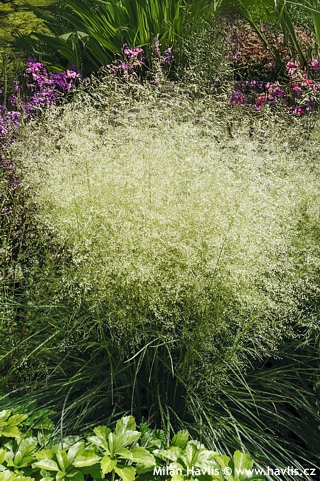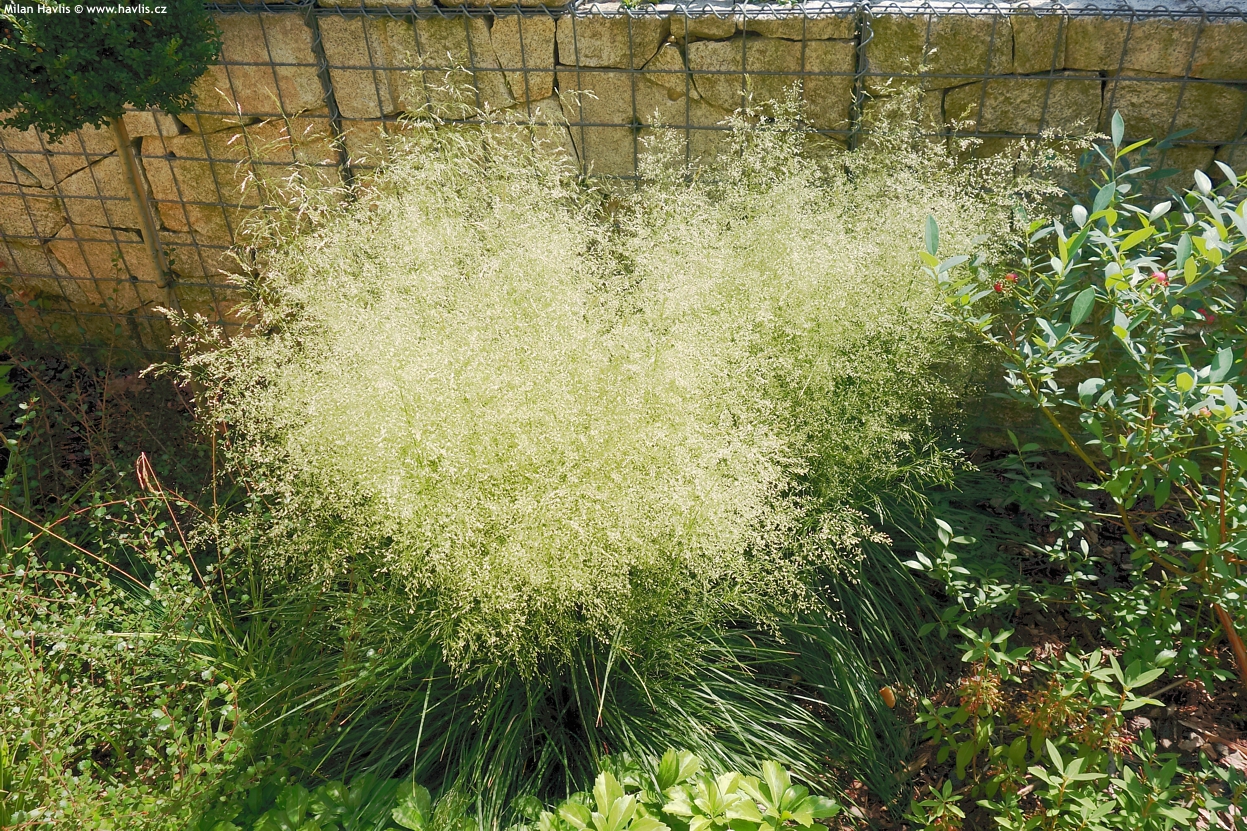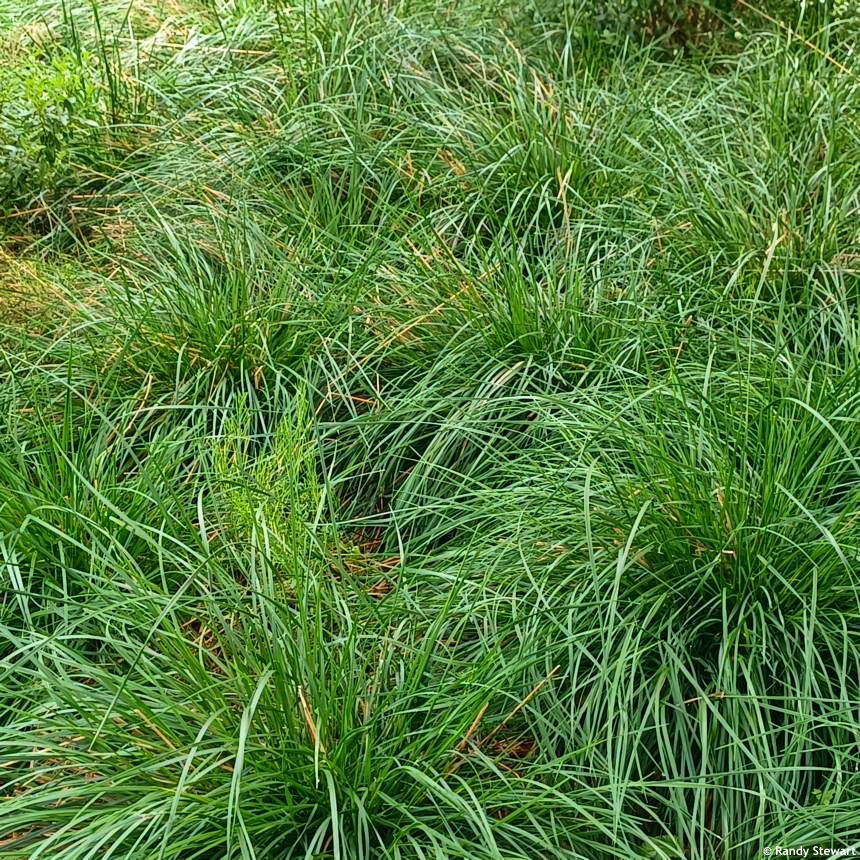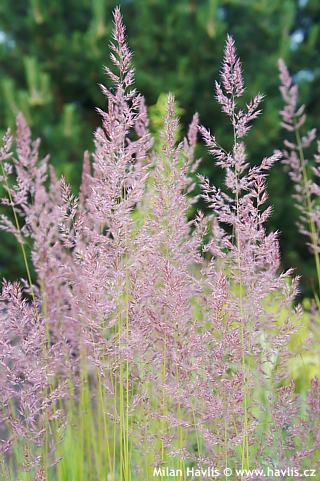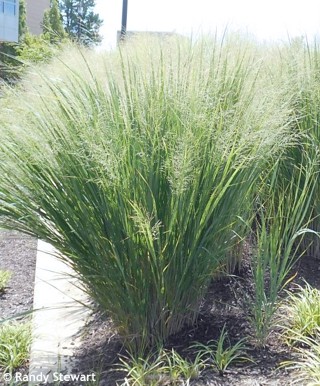Deschampsia cespitosa 'GOLDTAU' hairgrass, tussock grass


Deschampsia
Deschampsia is a large genus of grasses which includes at least 40 different species that can be found almost all around the world, including Antarctica (deschampsia anctartica). In our country grows only one, though very beautiful and hardy species called deschampsia cespitosa – hairgrass. It was first described by Swedish botanist Carl Linnaeus who named it Aira cespitosa. However, in 1812, Palisot de Beauvois, who was responsible for describing the entire genus, renamed it deschampsia cespitosa in honour of his contemporary, a French physician and naturalist Louis Auguste Deschamps (1765-1842). Thanks to its endurance and hardiness this species has become the most popular among breeders and commercial growers who now offer several varieties that differ from each other in height, flower colour, and leaf size. There is also a Czech selection called Pálava, named after a wine region in southern Moravia, arguably the hottest part of our country.Hairgrass is without any exaggeration a showstopper in full bloom. Especially in mass plantings it can induce the wow effect and jaw drop when you look at its airy, hazy inflorescences which look like a fluffy golden fairy-tale cloud. Flowers are formed atop about 70 cm tall, thin stems and are composed in profuse panicles. In June they start as light beige and by late August they mature to glowing gold like fields of mature wheat. You can enjoy not only their colour beauty but also their movement in the slightest breeze. Use it in meadow-like flower beds combined with other moisture-loving perennials (lythrum, helenium, veronica, etc.) or in larger nests of min. 3 plants – it does not expand too fast.
Deschampsia is a moisture-loving species, some even classify it as a bog plant. True. One of its key assets is tolerance of water-logged ground which most other ornamental grasses detest. It prefers deep and humus-rich soils of acidic to neutral reaction. Once established, it can cope with summer drought but some leaves here and there may dry out which does not look good. Grow it in full sun only, it can tolerate a very light partial-shade only. In the spring, before new leaves emerge, cut the entire plant down to 5-10 cm above the ground. It is clump-forming, not invasive or weedy. Hardy to min. -34 °C (USDA zone 4).
Last update: 28-08-2024
Goods are shipped all over Europe. For Russia and U.K. and for further details please read about SHIPPING OPTIONS HERE.
Are you interested in a serious discount for orders NOV-FEB? Check your options here.
THE PRICES INCLUDE VAT of 15%. For quick conversion you can use 1 CZK = approx. 0.04 EUR
- STANDARD QUALITY - Plants of this group are 1st class quality with number of branches and overall density adequate to their size and age, considering they were container grown.
- DE LUXE QUALITY - This label guarantees a luxurious quality of manually selected plants that, compared to their height and age, are exceptionally dense and beautiful.
- EXTRA - These plants are usually mature and bigger specimens with exceptional overall appearance.
- STANDARD (as described in the plant form) means a tree with a trunk of 190-210 cm and a crown at the top, unless specified differently. The commercial size for trees is their girth measured in the height of 1m from ground.
- HOBBY - These plants are of the same quality as our standard-quality plants but younger and therefore cheaper.
- SHRUB - a woody plant with branches growing bushy from the ground level.
- HALF-STANDARD or MINI-STANDARD - a small tree with shorter trunk, its size is usually specified.
- FEATHERED - These are trees with branches growing already from the base of the trunk and up along the stem.
- GRASSES and PERENNIALS - Sizes given usually read the diameter of the pot or the clump, as specified.












